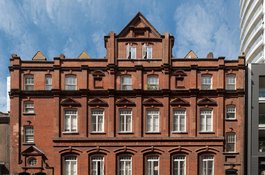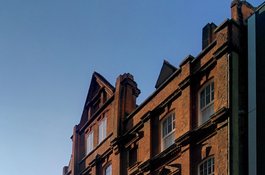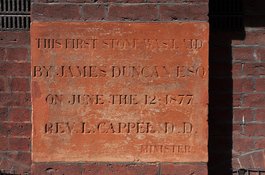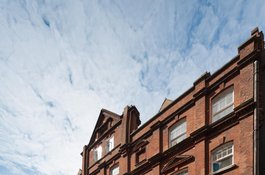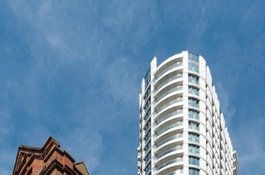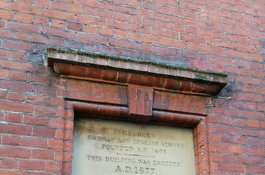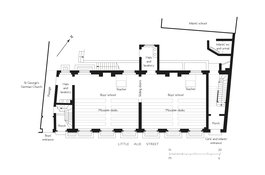The Reminiscences of Doctor John Sebastian Helmcken (1824-1920)
Contributed by Sarah Milne, Survey of London on Sept. 28, 2017
Of German ancestry, John Helmcken's father and mother ran the White Swan Pub on Alie Street in the early-mid nineteenth century. Helmcken grew up there, attended St George's German and English School from the age of four, and latterly recorded his memories, which were edited and published by Dorothy Blackey-Smith in 1975 under the title 'The reminiscences of Doctor John Sebastian Helmcken'. Below is an extract relating to the church and school:
"In Little Alie Street stood St George's German Church and School - the former old fashioned, with galleries on each side and above in the corners; a complete church with the Revd. Dr. Schwabe as Minister. The school was an ordinary schoolroom, with a stove in the centre and plenty light. A graveyard existed immediately at the back of the school and hardly separated from it, save by a diminutive fence. Sunflowers and others grew in it and somehow or other the boys considered it sacred and seldom played there at all. The bricks of the school were furrowed, by the boys sharpening their slate pencils there. The church was heated by a furnace fed from the outside; hot air passing into the church...
I suppose I was like other little boys full of mischief, and so sent to a girls' school kept by an old Miss Somebody...However I was soon turned out of or taken away from the girls' school and sent to St George's German and English School, Vorweg the Master being a friend of my mother. So having dressed - made decent and my hair brushed, I set to crying, but this did not hinder my going. Father took me there and left me to cry in the schoolroom all day. After a short time I got used to the discipline and used to go off with alacrity at 9 o'clock in the morning and remain at school until 5 in the afternoon. As schools go now, this would be considered a very poor school indeed, as we were only drilled in English and German, Writing and Arithmetic and Geography. The school was partly supported by subscriptions, chiefly from the Germans - the cost to a scholar being I think about ten shillings per quarter plus books and so forth. There were about eighty boys of all sizes and grades...
It was the prescribed duty of certain boys to wind up the church clock once a week - it had a winch. No boy ever went alone! As several went usually together, nice romps we had occasionally in the church, but for all this we felt uncanny in the place, particularly as in the vaults under the entrance to the church, lay buried, some of the enlightened pillars of the church and perhaps ministers etc. I never saw these vaults opened but once - someone had to be buried. A huge flagstone covering the vault had been removed, and descending into the dismal cavern, one saw tiers of leaden coffins, some encased with wood, others where it had rotted off. I did not stop there long - a lantern shed a dismal light - and the air felt cold and I shuddery.
We all were expected to be in church twice every Sunday - and had benches fronting the altar and the Clerk, who was Vorweg our schoolmaster. Of course we could all sing and so were a sort of choir. During Lent the church was draped in black - pulpit, reading desk and all - and then we had to go to church twice in the week also. At Christmas it was bedecked with rosemary, holly and laurustinus. The services were all in German - the congregation Germans - chiefly from Hanover, at all events Low Germany and comprised among others many German merchants from the City and surroundings."
